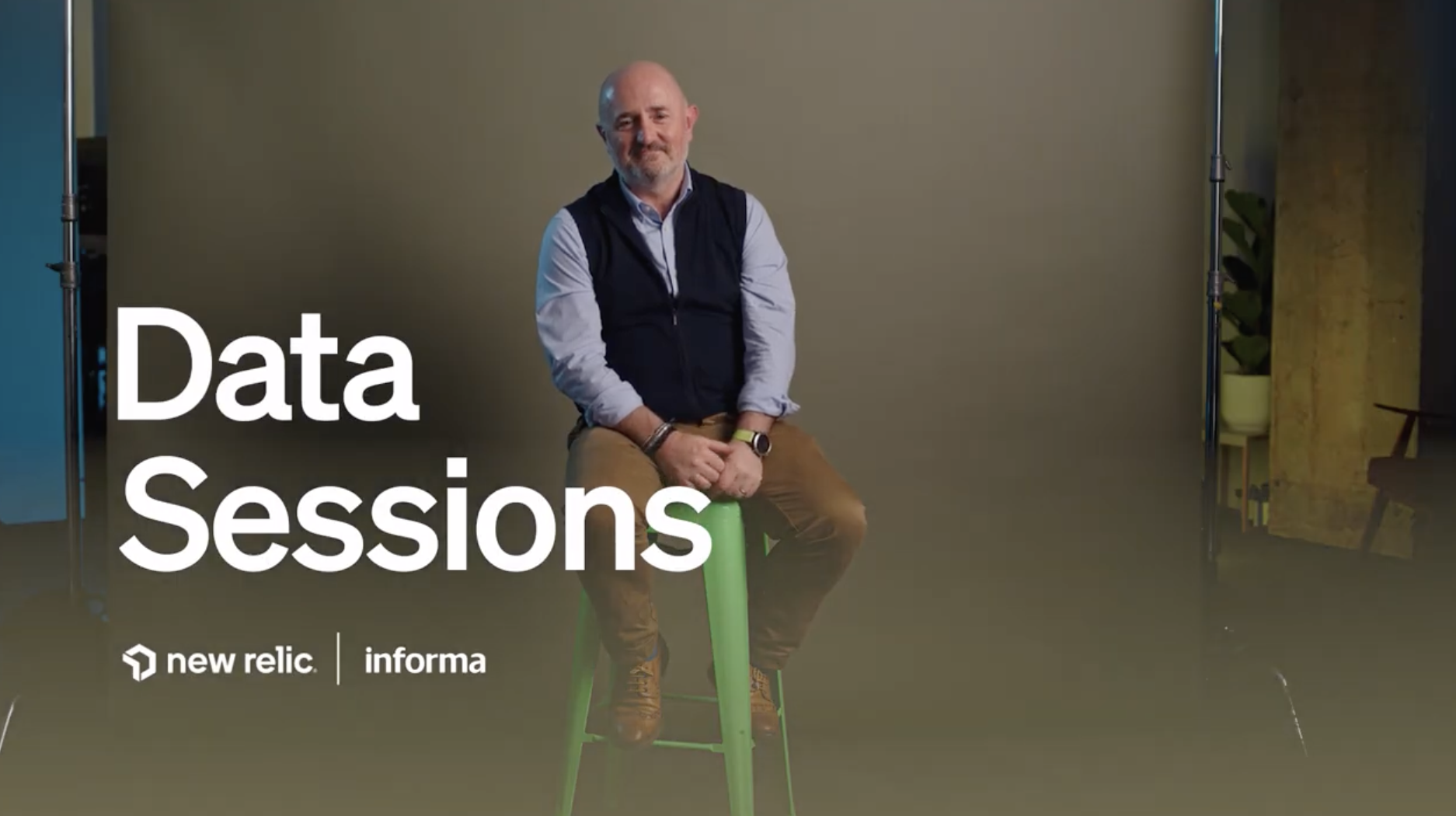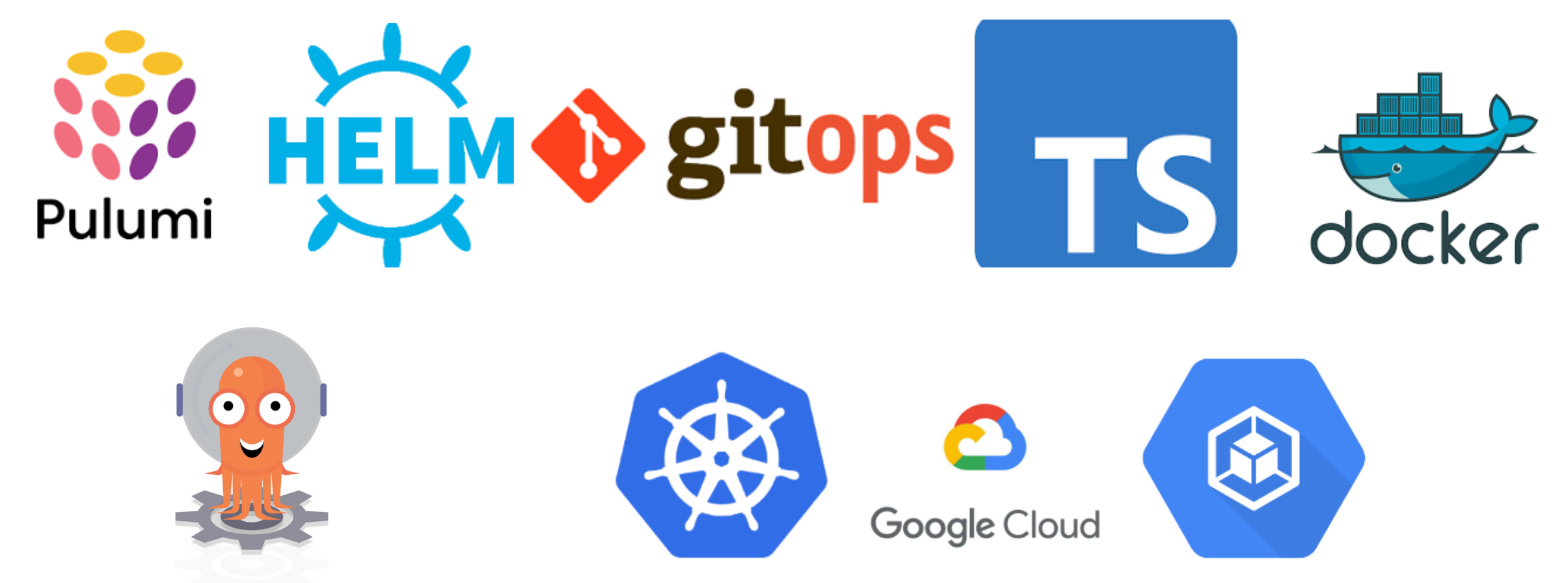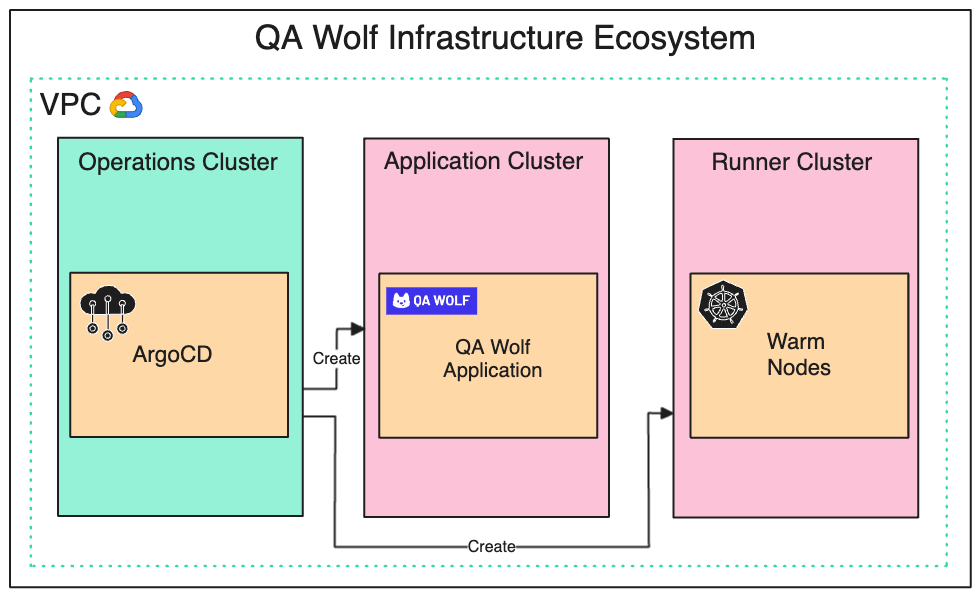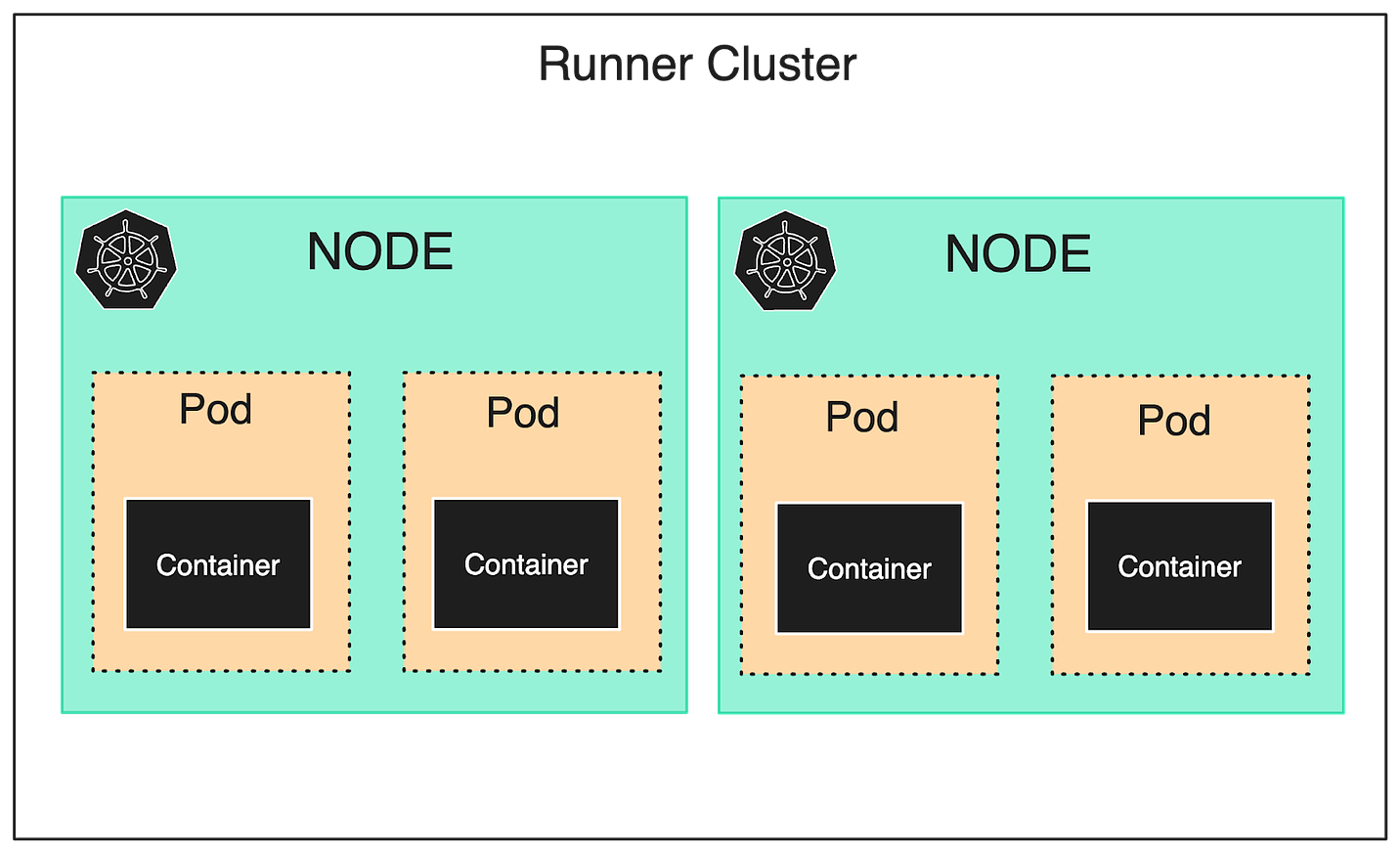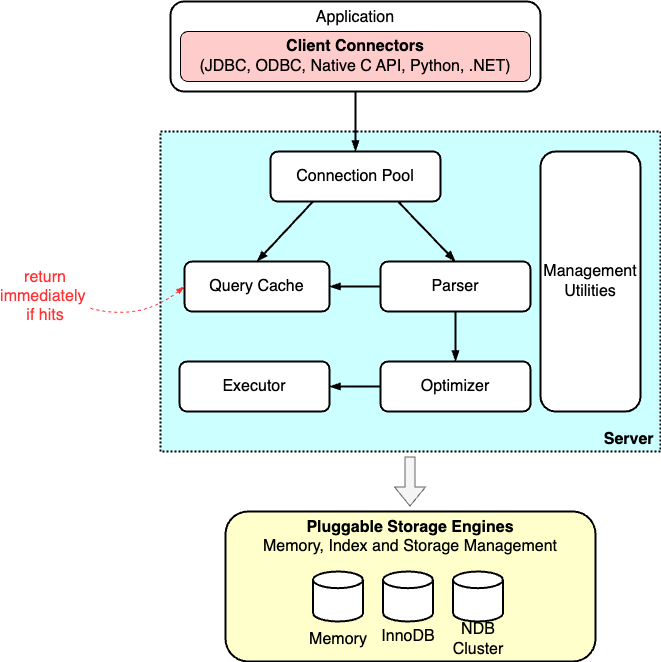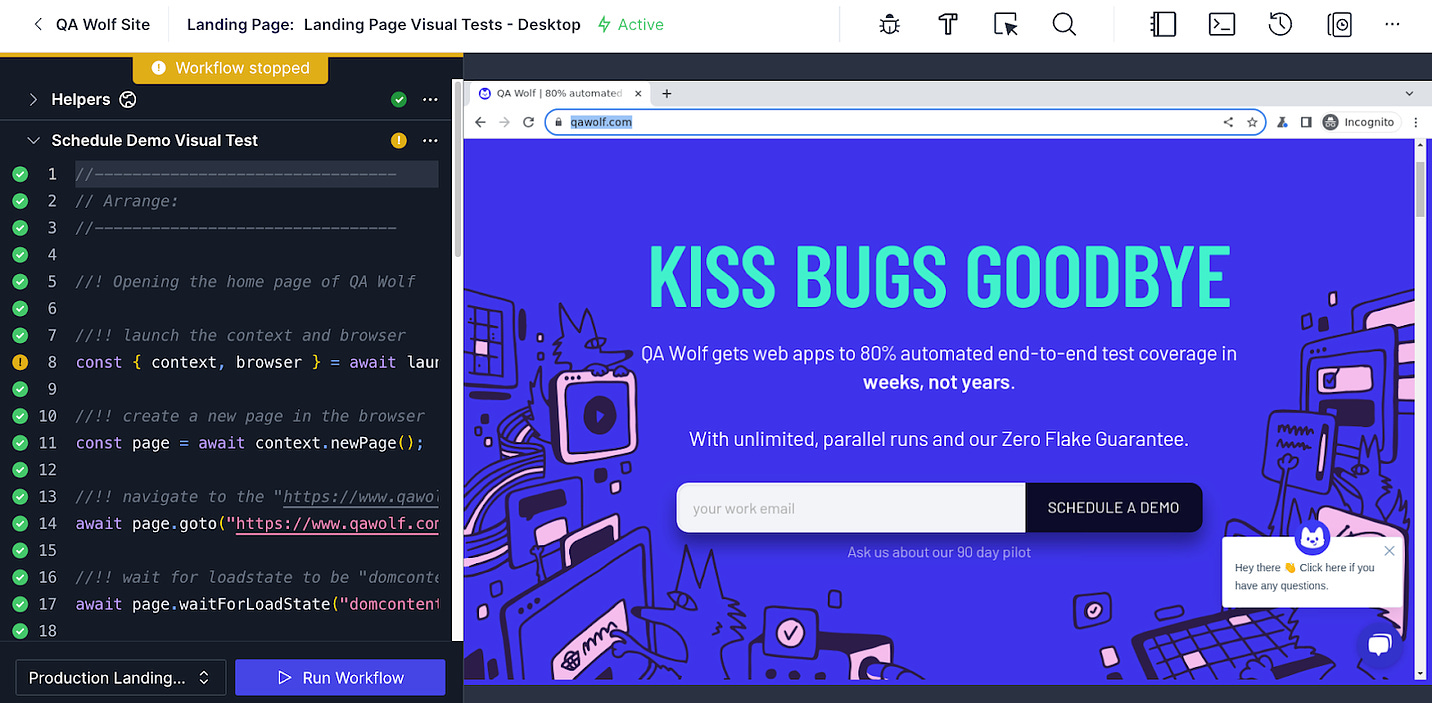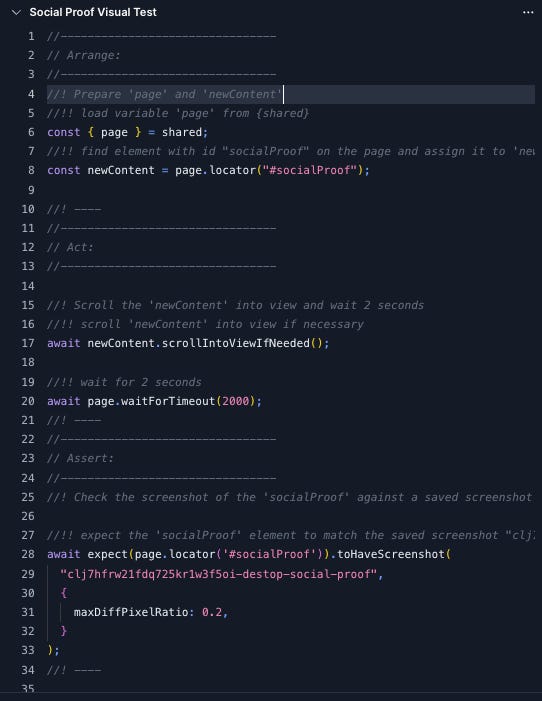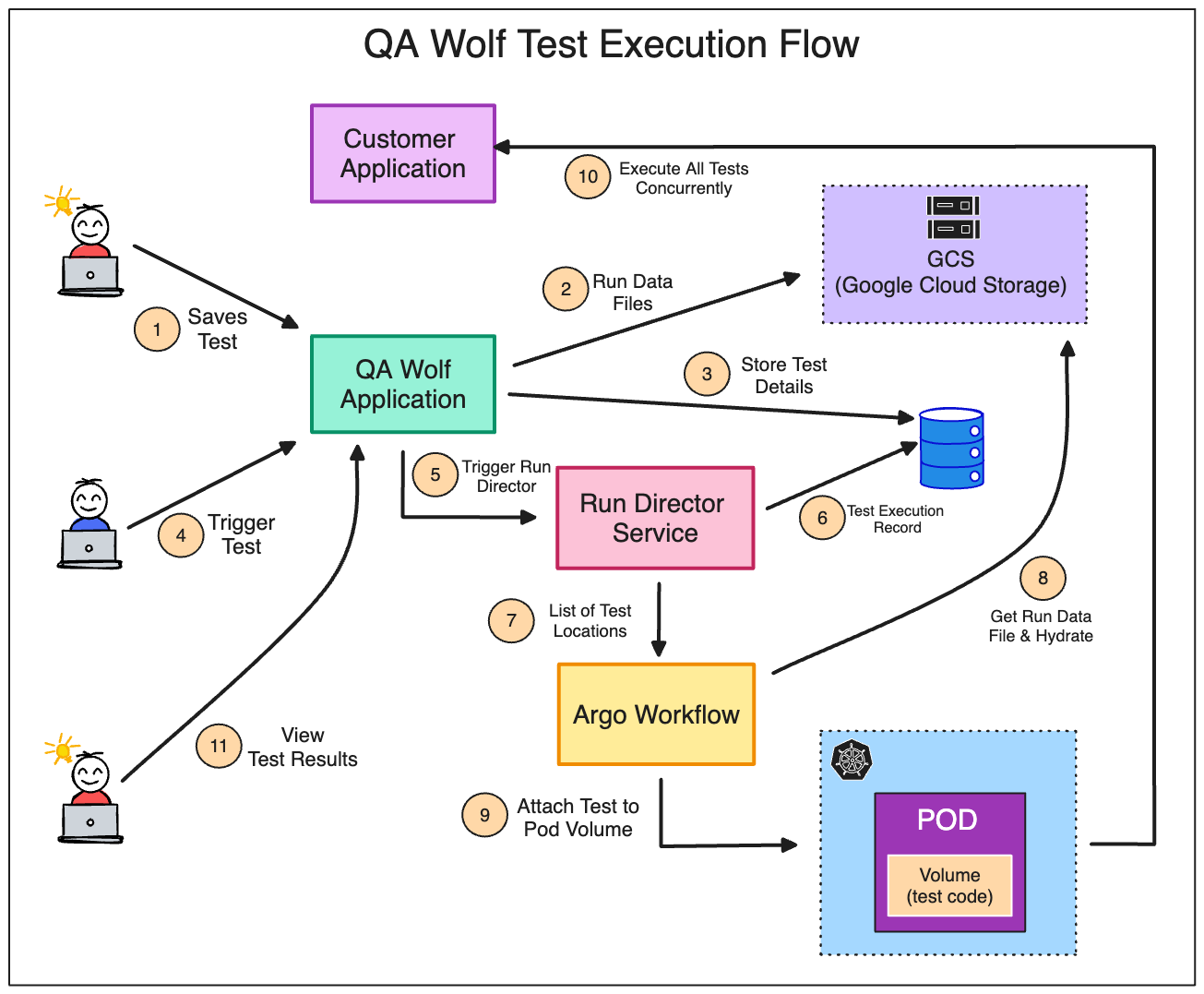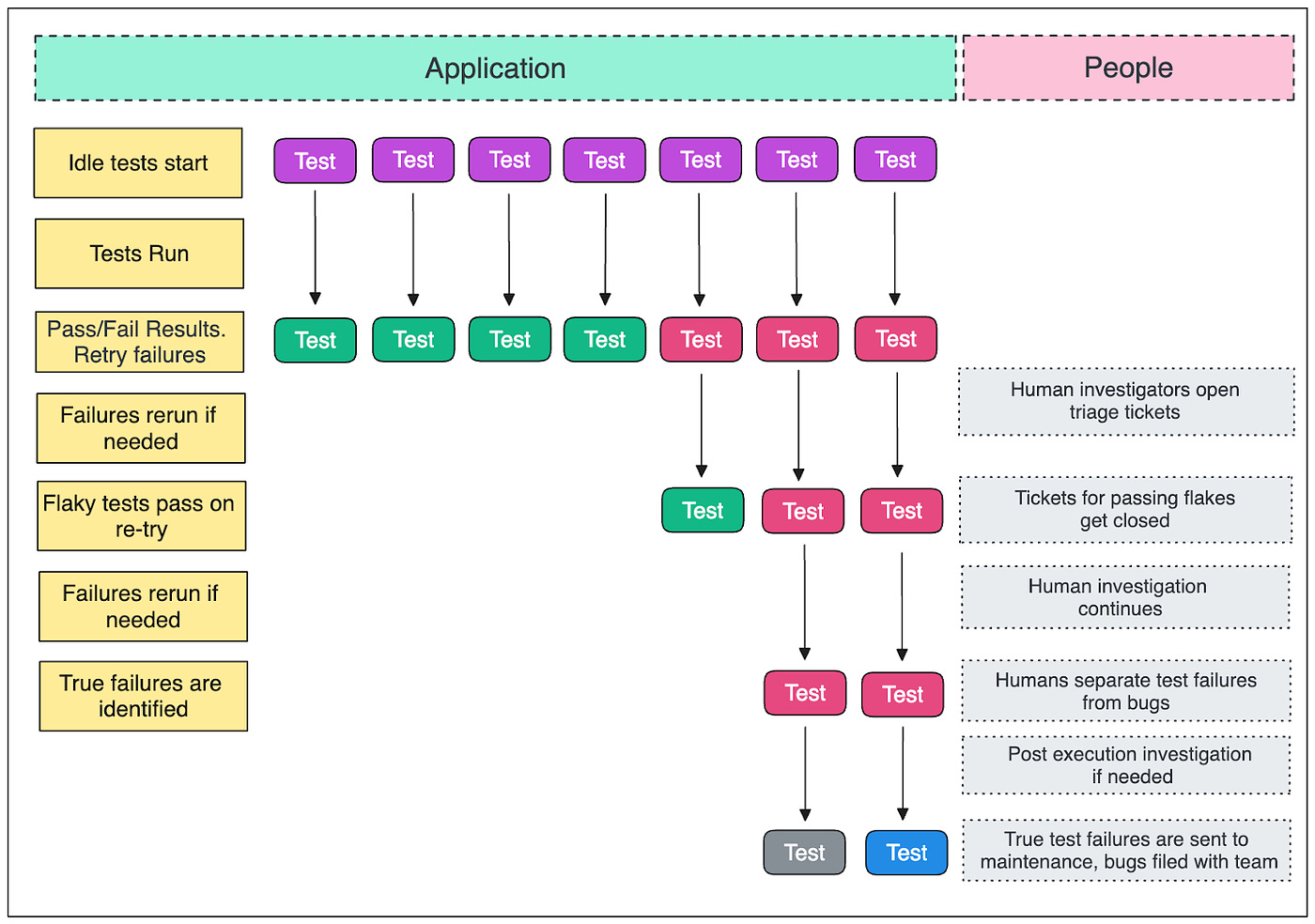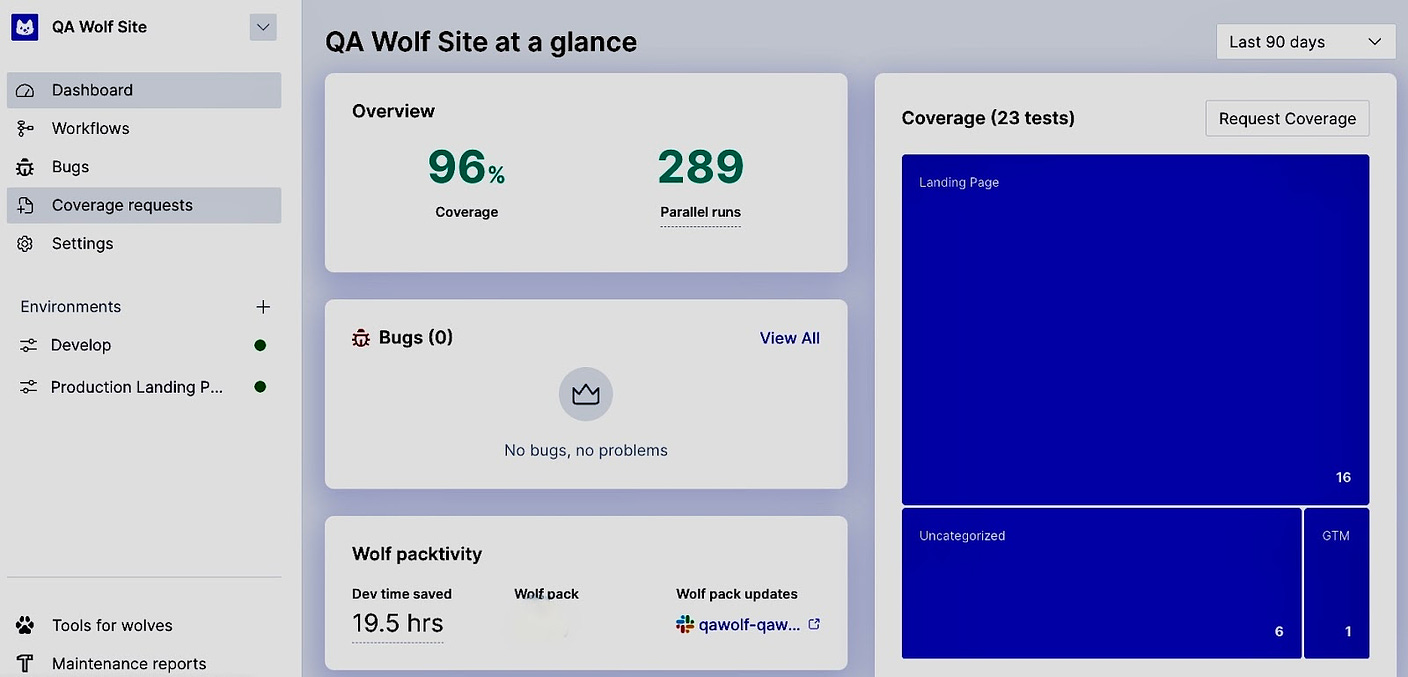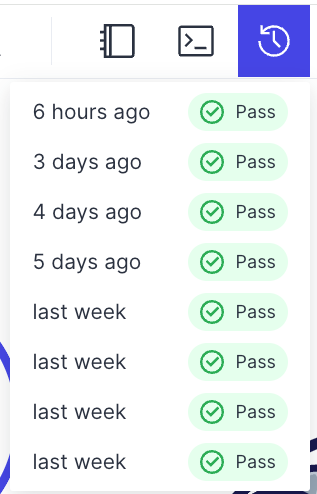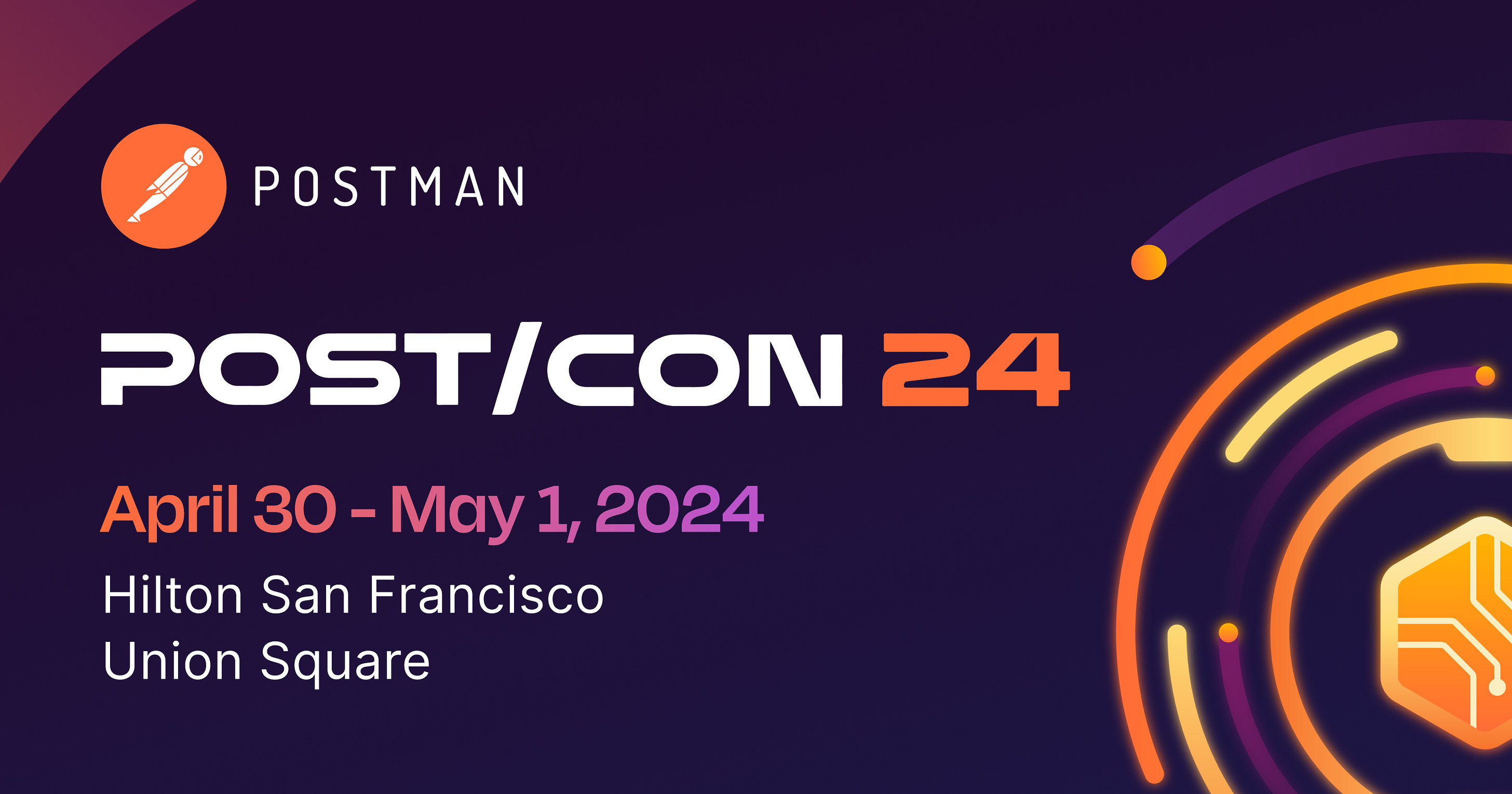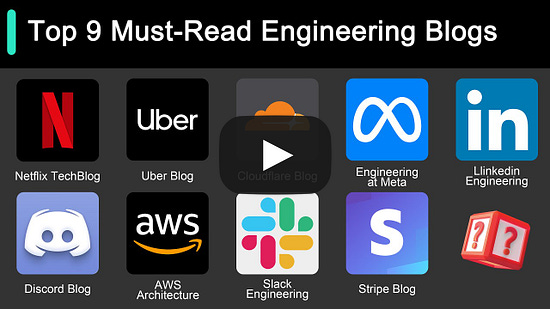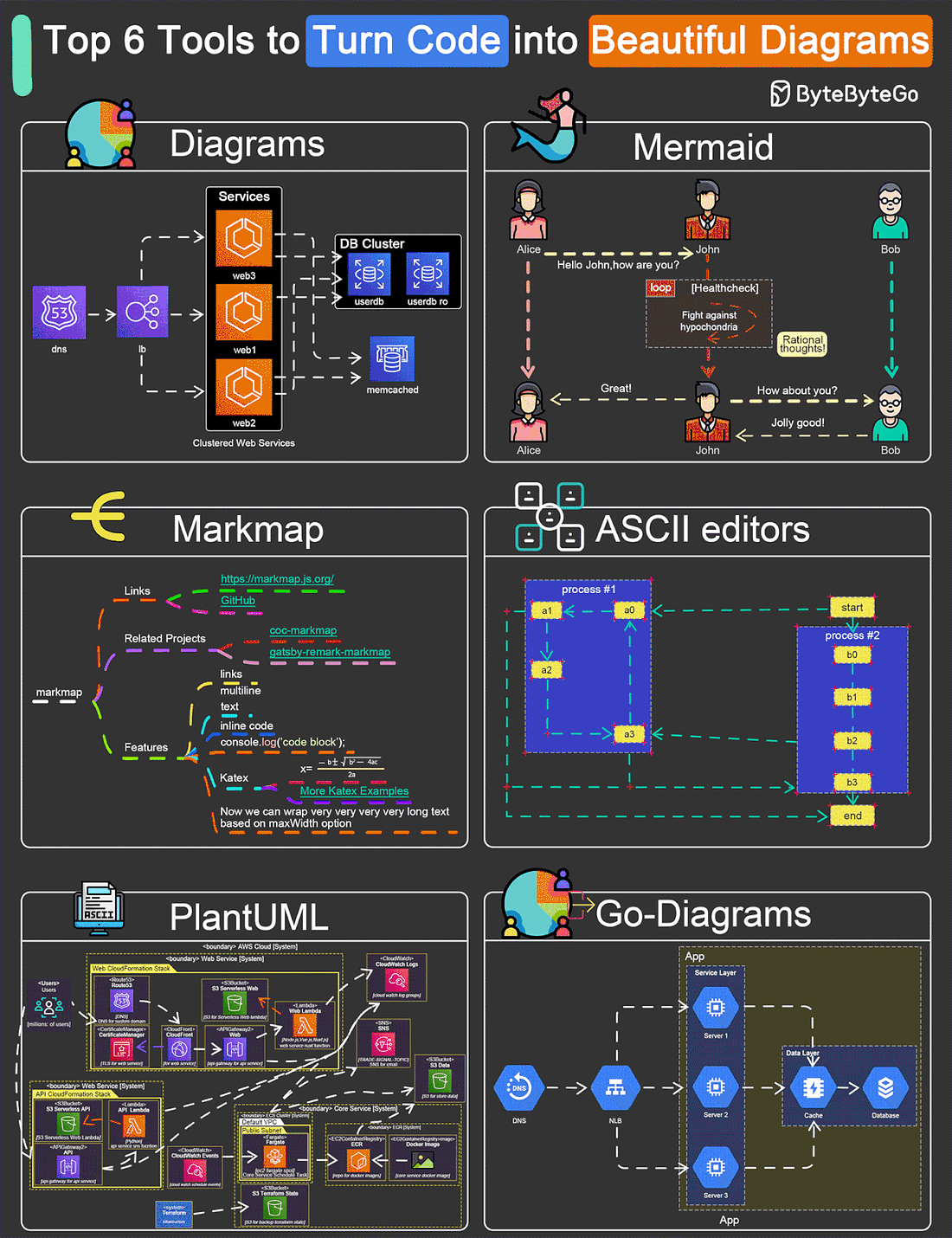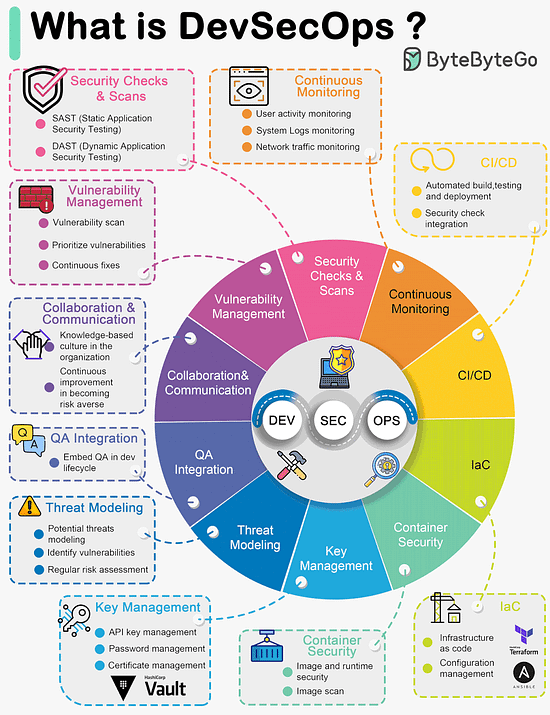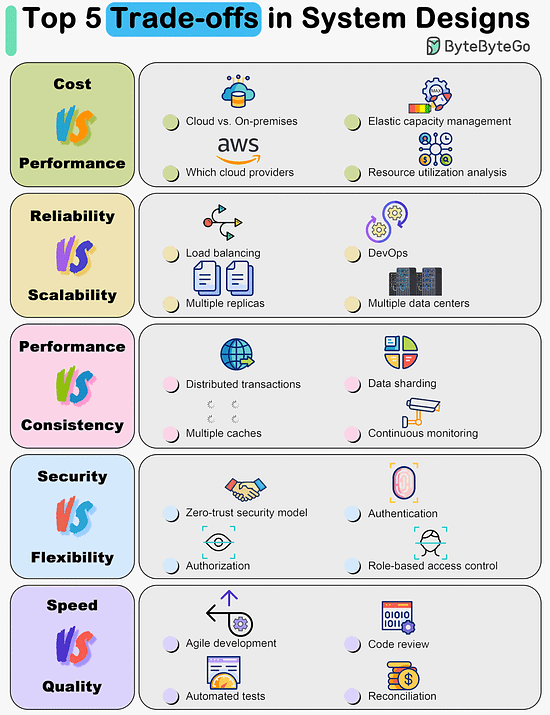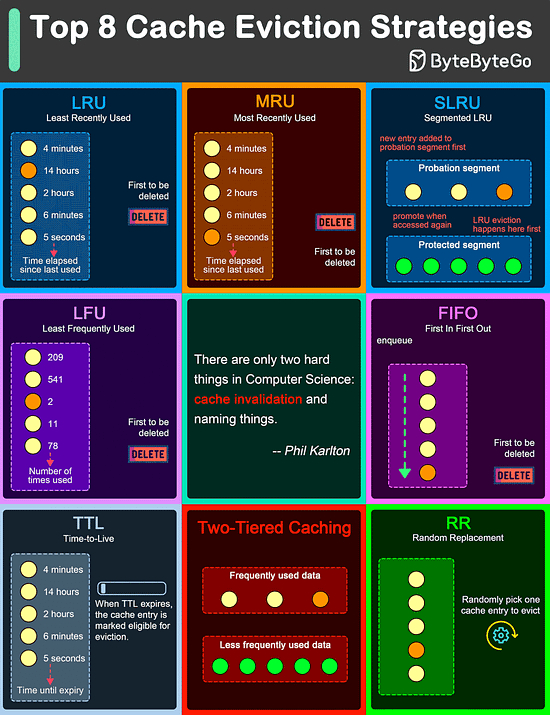Archives
- By thread 5362
-
By date
- June 2021 10
- July 2021 6
- August 2021 20
- September 2021 21
- October 2021 48
- November 2021 40
- December 2021 23
- January 2022 46
- February 2022 80
- March 2022 109
- April 2022 100
- May 2022 97
- June 2022 105
- July 2022 82
- August 2022 95
- September 2022 103
- October 2022 117
- November 2022 115
- December 2022 102
- January 2023 88
- February 2023 90
- March 2023 116
- April 2023 97
- May 2023 159
- June 2023 145
- July 2023 120
- August 2023 90
- September 2023 102
- October 2023 106
- November 2023 100
- December 2023 74
- January 2024 75
- February 2024 75
- March 2024 78
- April 2024 74
- May 2024 108
- June 2024 98
- July 2024 116
- August 2024 134
- September 2024 130
- October 2024 141
- November 2024 171
- December 2024 115
- January 2025 216
- February 2025 140
- March 2025 220
- April 2025 233
- May 2025 239
- June 2025 303
- July 2025 175
-
Route Optimization Software - Automate the planning and scheduling of your fleets.
Route Optimization Software - Automate the planning and scheduling of your fleets.
Optimize Routes for Increased Efficiency, Reduced Costs, and Improved Customer Satisfaction.
Optimize Routes for Increased Efficiency, Reduced Costs, and Improved Customer Satisfaction.
Catch a glimpse of what our Route Optimisation has to offer





Uffizio Technologies Pvt. Ltd., 4th Floor, Metropolis, Opp. S.T Workshop, Valsad, Gujarat, 396001, India
by "Sunny Thakur" <sunny.thakur@uffizio.com> - 08:00 - 3 May 2024 -
Why do bad leaders rise to the top?
The Shortlist
Four new insights
by "McKinsey CEO Shortlist" <publishing@email.mckinsey.com> - 04:46 - 3 May 2024 -
How can employees go from ‘meh’ to motivated?
On Point
5 questions to ask workers Brought to you by Liz Hilton Segel, chief client officer and managing partner, global industry practices, & Homayoun Hatami, managing partner, global client capabilities
•
Dissatisfied workers. According to recent McKinsey research, more than half of workers report being relatively dissatisfied with their jobs. That’s a big percentage that strikes at the heart of value creation for organizations that are already facing rising labor costs and declining productivity, McKinsey senior partner Aaron De Smet and coauthors share. Identifying where workers fall along a satisfaction spectrum could help leaders solve the problem.
—Edited by Belinda Yu, editor, Atlanta
This email contains information about McKinsey's research, insights, services, or events. By opening our emails or clicking on links, you agree to our use of cookies and web tracking technology. For more information on how we use and protect your information, please review our privacy policy.
You received this newsletter because you subscribed to the Only McKinsey newsletter, formerly called On Point.
Copyright © 2024 | McKinsey & Company, 3 World Trade Center, 175 Greenwich Street, New York, NY 10007
by "Only McKinsey" <publishing@email.mckinsey.com> - 01:05 - 3 May 2024 -
Digital twins, the future of AI, MSMEs, and more: The Daily Read Weekender
Big reads for the weekend Brought to you by Liz Hilton Segel, chief client officer and managing partner, global industry practices, & Homayoun Hatami, managing partner, global client capabilities
May is here and it’s almost the weekend. Take a breather and dive into the week’s highlights on digital twins, the future of AI, MSMEs, and more.
QUOTE OF THE DAY
chart of the day
Ready to unwind?
—Edited by Joyce Yoo, editor, New York
Share these insights
Did you enjoy this newsletter? Forward it to colleagues and friends so they can subscribe too. Was this issue forwarded to you? Sign up for it and sample our 40+ other free email subscriptions here.
This email contains information about McKinsey's research, insights, services, or events. By opening our emails or clicking on links, you agree to our use of cookies and web tracking technology. For more information on how we use and protect your information, please review our privacy policy.
You received this email because you subscribed to our McKinsey Global Institute alert list.
Copyright © 2024 | McKinsey & Company, 3 World Trade Center, 175 Greenwich Street, New York, NY 10007
by "McKinsey Daily Read" <publishing@email.mckinsey.com> - 12:27 - 3 May 2024 -
A microscope on small businesses: Spotting opportunities to boost productivity
View the report New from McKinsey Global Institute
This email contains information about McKinsey's research, insights, services, or events. By opening our emails or clicking on links, you agree to our use of cookies and web tracking technology. For more information on how we use and protect your information, please review our privacy policy.
You received this email because you subscribed to our McKinsey Global Institute alert list.
Copyright © 2024 | McKinsey & Company, 3 World Trade Center, 175 Greenwich Street, New York, NY 10007
by "McKinsey & Company" <publishing@email.mckinsey.com> - 02:43 - 2 May 2024 -
Unlocking the Power of SQL Queries for Improved Performance
Unlocking the Power of SQL Queries for Improved Performance
SQL, or Structured Query Language, is the backbone of modern data management. It enables efficient retrieval, manipulation, and management of data in a Database Management System (DBMS). Each SQL command taps into a complex sequence within a database, building on concepts like the connection pool, query cache, command parser, optimizer, and executor, which we covered in our last issue.͏ ͏ ͏ ͏ ͏ ͏ ͏ ͏ ͏ ͏ ͏ ͏ ͏ ͏ ͏ ͏ ͏ ͏ ͏ ͏ ͏ ͏ ͏ ͏ ͏ ͏ ͏ ͏ ͏ ͏ ͏ ͏ ͏ ͏ ͏ ͏ ͏ ͏ ͏ ͏ ͏ ͏ ͏ ͏ ͏ ͏ ͏ ͏ ͏ ͏ ͏ ͏ ͏ ͏ ͏ ͏ ͏ ͏ ͏ ͏ ͏ ͏ ͏ ͏ ͏ ͏ ͏ ͏ ͏ ͏ ͏ ͏ ͏ ͏ ͏ ͏ ͏ ͏ ͏ ͏ ͏ ͏ ͏ ͏ ͏ ͏ ͏ ͏ ͏ ͏ ͏ ͏ ͏ ͏ ͏ ͏ ͏ ͏ ͏ ͏ ͏ ͏ ͏ ͏ ͏ ͏ ͏ ͏ ͏ ͏ ͏ ͏ ͏ ͏ ͏ ͏ ͏ ͏ ͏ ͏ ͏ ͏ ͏ ͏ ͏ ͏ ͏ ͏ ͏ ͏ ͏ ͏ ͏ ͏ ͏ ͏ ͏ ͏ ͏ ͏ ͏ ͏ ͏ ͏ ͏ ͏ ͏ ͏ ͏ ͏ ͏ ͏ ͏ ͏ ͏ ͏ ͏ ͏ ͏ ͏ ͏ ͏ ͏ ͏ ͏ ͏ ͏ ͏ ͏ ͏ ͏ ͏ ͏ ͏ ͏ ͏ ͏ ͏ ͏ ͏ ͏ ͏ ͏ ͏ ͏ ͏ ͏ ͏ ͏ ͏ ͏ ͏ ͏ ͏ ͏ ͏ ͏ ͏ ͏ ͏ Forwarded this email? Subscribe here for moreLatest articles
If you’re not a subscriber, here’s what you missed this month.
To receive all the full articles and support ByteByteGo, consider subscribing:
SQL, or Structured Query Language, is the backbone of modern data management. It enables efficient retrieval, manipulation, and management of data in a Database Management System (DBMS). Each SQL command taps into a complex sequence within a database, building on concepts like the connection pool, query cache, command parser, optimizer, and executor, which we covered in our last issue.
Crafting effective queries is essential. The right SQL can enhance database performance; the wrong one can lead to increased costs and slower responses. In this issue, we focus on strategies such as using the Explain Plan, adding proper indexes, and optimizing commands like COUNT(*) and ORDER BY. We also dive into troubleshooting slow queries.
While MySQL is our primary example, the techniques and strategies discussed are applicable across various database systems. Join us as we refine SQL queries for better performance and cost efficiency.
Explain Plan
In MySQL, the EXPLAIN command, known as EXPLAIN PLAN in systems like Oracle, is a useful tool for analyzing how queries are executed. By adding EXPLAIN before a SELECT statement, MySQL provides information about how it processes the SQL. This output shows the tables involved, operations performed (such as sort, scan, and join), and the indexes used, among other execution details. This tool is particularly useful for optimizing SQL queries, as it helps developers see the query execution plan and identify potential bottlenecks.
When an EXPLAIN statement is executed in MySQL, the database engine simulates the query execution. This simulation generates a detailed report without running the actual query. This report includes several important columns:
id: Identifier for each step in the query execution.
select_type: The type of SELECT operation, like SIMPLE (a basic SELECT without unions or subqueries), SUBQUERY, or UNION.
table: The table involved in a particular part of the query.
type: The join type shows how MySQL joins the tables. Common types include ALL (full table scan), index (index scan), range (index range scan), eq_ref (unique index scan), const/system (constant value optimization).
possible_keys: Potential indexes that might be used.
key: The key (index) chosen by MySQL.
key_len: The length of the chosen key.
ref: Columns or constants used with the key to select rows.
rows: Estimated number of rows MySQL expects to examine when executing the query.
Extra: Additional details, such as the use of temporary tables or filesorts.
Let's explore a practical application of the EXPLAIN command using a database table named orders. Suppose we want to select orders with user_id equal to 100.
SELECT * FROM orders WHERE user_id = 100;To analyze this query with EXPLAIN, we would use:
EXPLAIN SELECT * FROM orders WHERE user_id = 100;The output might look like this:

Continue reading this post for free, courtesy of Alex Xu.
A subscription gets you:
An extra deep dive on Thursdays Full archive Many expense it with team's learning budget Like
Comment
Restack
© 2024 ByteByteGo
548 Market Street PMB 72296, San Francisco, CA 94104
Unsubscribe
by "ByteByteGo" <bytebytego@substack.com> - 11:38 - 2 May 2024 -
New Relic AI monitoring—the industry’s first APM for AI—now generally available
New Relic
 April 2024
April 2024New Relic AI monitoring is now generally available New Relic AI monitoring gives you complete visibility across your entire AI stack just like application performance monitoring. Effortlessly monitor and manage your AI applications confidently with features like automatic instrumentation, deep trace insights into large language model responses, robust data security, and model comparison.
Read the blog  How BlackLine saved $16 million per year by consolidating toolsConsolidating tools shifted incident culture and created new ways to build code at BlackLine. Here’s how.Informa runs on New Relic to deliver business value
How BlackLine saved $16 million per year by consolidating toolsConsolidating tools shifted incident culture and created new ways to build code at BlackLine. Here’s how.Informa runs on New Relic to deliver business value
Informa improves their engineering processes to move beyond performance-based conversations to conversations around how their technology is impacting their business. With observability, Informa is building a culture of continuous improvement.Useful reads Custom events are a developer's best friendExplore how New Relic custom events can offer deeper insights and enhance operational efficiency for developers.Upcoming Events
Custom events are a developer's best friendExplore how New Relic custom events can offer deeper insights and enhance operational efficiency for developers.Upcoming Events AWS Summits EMEAWe're thrilled to announce our participation in the upcoming AWS Summits happening in multiple cities across Europe and beyond! Here's where you can catch us.
AWS Summits EMEAWe're thrilled to announce our participation in the upcoming AWS Summits happening in multiple cities across Europe and beyond! Here's where you can catch us.
- Berlin (Booth PO4)
- Stockholm (Booth S6)
- Dubai (Booth G6)
- Madrid
We'll be showcasing our latest innovations, hosting engaging demos, and offering valuable insights into how New Relic can empower your cloud journey on AWS.
Don't miss this opportunity to connect with us and explore the future of observability and performance monitoring in the cloud!
Register here.
New Relic University Online WorkshopsJoin our upcoming New Relic online live training workshops. These 90-minute trainer-led workshops with hands-on labs will help you up level your observability skills.
- Maximising performance with integrated APM and infrastructure monitoring
- 30 May at 10am BST / 11am CEST
- Register here.
- Maximising observability with New Relic logs
- 27 June at 10am BST / 11am CEST
- Register here.
New Relic End-of-Life Updates Legacy synthetics runtimes and CPM (October 22)
Legacy synthetics runtimes and CPM (October 22)- New Relic will end-of-life (EOL) our legacy Chrome 72 (and older) and Node 10 (and older) synthetics runtimes and the containerized private minion (CPM).
- Customers will be unable to create new monitors using legacy runtimes on public or private locations as of June 30.
- All customers must be on the new runtime by October 22 in order to prevent synthetic monitoring degradation from occurring.
- See here for more information.
Support for PromQL (July 15)
- We’re standardizing our querying experiences around NRQL by removing PromQL-styled query support.
- You can still access Prometheus metrics and events, but will need to adopt NRQL as the method for querying Prometheus data.
- If you’re currently using PromQL-styled queries to query your data, you’ll need to adopt NRQL.
- Prometheus metrics data will still be accessible in New Relic.
- For more information, see our documentation.
Need help? Let's get in touch.



This email is sent from an account used for sending messages only. Please do not reply to this email to contact us—we will not get your response.
This email was sent to info@learn.odoo.com Update your email preferences.
For information about our privacy practices, see our Privacy Policy.
Need to contact New Relic? You can chat or call us at +44 20 3859 9190.
Strand Bridge House, 138-142 Strand, London WC2R 1HH
© 2024 New Relic, Inc. All rights reserved. New Relic logo are trademarks of New Relic, Inc

by "New Relic" <emeamaketing@newrelic.com> - 05:03 - 2 May 2024 -
What’s the state of European grocery retail in 2024?
On Point
8 trends in grocery retail Brought to you by Liz Hilton Segel, chief client officer and managing partner, global industry practices, & Homayoun Hatami, managing partner, global client capabilities
•
Lower growth. European grocers faced a challenging year in 2023. Consumers tightened their belts amid rising inflation, leading to a drop in volume and significant downtrading. As a result, industry growth was significantly lower than food price inflation. In Europe, food price inflation averaged 12.8% in 2023, while grocery sales grew at a rate of only 8.6%, McKinsey senior partner Franck Laizet and coauthors share. Still, even though macroeconomic uncertainty will likely persist in 2024, McKinsey data shows some signs of hope for 2024.
—Edited by Belinda Yu, editor, Atlanta
This email contains information about McKinsey's research, insights, services, or events. By opening our emails or clicking on links, you agree to our use of cookies and web tracking technology. For more information on how we use and protect your information, please review our privacy policy.
You received this newsletter because you subscribed to the Only McKinsey newsletter, formerly called On Point.
Copyright © 2024 | McKinsey & Company, 3 World Trade Center, 175 Greenwich Street, New York, NY 10007
by "Only McKinsey" <publishing@email.mckinsey.com> - 01:30 - 2 May 2024 -
A new tool to drive software performance
Re:think
Tracking software development productivity FRESH TAKES ON BIG IDEAS
ON SOFTWARE EXCELLENCE
Can software developer productivity really be measured?Chandra Gnanasambandam
Companies have long had a difficult time tracking the experience and productivity of their software engineering teams and figuring out improvements. Part of the problem is that writing software code is an inherently creative and collaborative process. Establishing a clear link between the various inputs and outputs (rather than business outcomes) is also challenging.
Yet learning how to measure the maturity of practices that contribute to developer experience and productivity is more critical than ever. Virtually every company today wants to become a software company to one extent or another. There are currently about 25 million to 30 million developers worldwide, a number expected to reach close to 50 million by the end of the decade. Low-code/no-code platforms and the emergence of generative AI (gen AI) are likely to greatly expand the pool of folks who can create applications and build digital solutions.
Today, there are two main measurement systems that the industry uses to provide insight into developer productivity. DORA (short for “DevOps research and assessment”) metrics focus on outcomes, and SPACE (short for “satisfaction/well-being, performance, activity, communication/collaboration, and efficiency/flow”) takes a multidimensional view of productivity. Both systems provide useful insights.
We believe an additional set of metrics can provide deeper insight into the root causes and identify bottlenecks that slow developers down. This system is intended to help create the best environment and experience to improve overall performance and foster innovation. Critically, it is not intended for performance management or oversight of developers but rather to improve their day-to-day experience and flow; indeed, all data is anonymized and not attributable to a specific individual. The approach involves a set of metrics that analyze work at the system, group, and individual level, focusing on a few key areas of the development process.
The first area is the divide in software development between the inner loop, which encompasses the core work that developers do when they are in the “flow,” and the outer loop, which focuses on all other tasks required to ship a product (integration testing, dependency management, setting up environments, et cetera). Outer-loop activity has real value, particularly in activities early in the development life cycle, such as technical discovery and design work or ensuring code meets the bar on quality, security, and compliance. However, our experience has shown that too much time in the outer loop can be a symptom of underlying issues that affect productivity—including manual activities to release code, holding patterns where developers are waiting on another colleague or team, and multiple meetings to manage dependencies. Leading tech companies aim for developers to spend close to 70 percent of their time on inner-loop activity. By tracking how much time developers are spending on the two loops, companies can optimize the use of in-demand talent.“Tracking developer productivity in a more holistic way can shorten the time it takes to launch a product by 30 to 40 percent.”
The next step is applying the Developer Velocity Index, which collects insights directly from developers to identify the factors that most affect developer experience and productivity. While this tool has its limitations, it can help companies gain qualitative insight into their practices, tools, culture, and talent management and surface and correct any potential weaknesses they find.
The third thing the system does is conduct a broad-based contribution analysis that examines how teams are functioning collectively. Working with backlog management tools such as Jira, it plots a contribution distribution curve and identifies opportunities for improvement in the way that teams are set up or operating, such as increasing automation, developing individual skills, and rethinking role distribution. One company, for example, discovered its newest hires were having difficulty becoming productive and responded by reassessing its onboarding, documentation, and mentorship programs.
More than 50 companies across sectors have already implemented this new approach. Early findings are encouraging, including a 30 to 40 percent reduction in the time it takes to launch a product, a 15 to 25 percent improvement in product quality, a 20 percent jump in developer experience scores, and a 60 percent improvement in customer satisfaction ratings. We have found that developers are typically happy when companies put in place a holistic measurement system like this, because it highlights issues they have dealt with and been frustrated by. This approach has also had the effect of strengthening a culture of psychological safety, where all team members feel free to take risks and share ideas without fear of negative repercussions or personal judgment. McKinsey research on Developer Velocity has previously shown that psychological safety can be a leading driver of developer experience and innovation.
As effective as these metrics have proven to be so far, there are some pitfalls to avoid in how they are applied. In addition to not employing the metrics for any kind of performance management, they should not be used to attempt to create “targets” for teams, since they are too blunt an instrument to optimize for (and can incentivize the wrong behaviors). Nor should they be leveraged to compare teams, as each has its distinct way of working. Lastly, for any engineering metric, absolute numbers usually do not help, and it’s better to look at trends.
Still, this type of holistic approach could be even more important in the coming years. There is emerging evidence that gen AI can help boost productivity for software development teams that have already started to make improvements in this area. While results vary greatly depending on the specific task and developers’ years in the field, pilots show that gen AI can help further increase developer productivity by as much as 15 to 25 percent. In particular, complex activities such as code refactoring (migrating or updating legacy code) and code documentation (maintaining detailed records and explanations of the changes made to existing code) enjoy sizable boosts from gen AI. That research has also shown that usage of gen AI can increase overall developer happiness and satisfaction. And even as gen AI’s impact on the developer experience and software innovation grows, one thing that isn’t likely to change is that a happier developer (or any worker) tends to be a more productive developer.ABOUT THIS AUTHOR
Chandra Gnanasambandam is a senior partner in McKinsey’s Bay Area office.
MORE FROM THIS AUTHOR
UP NEXT
John Murnane on canal cargo
Simultaneous slowdowns at the Panama and Suez Canals created supply chain headaches. But some companies might transform a logistical challenge into a strategic advantage.
This email contains information about McKinsey’s research, insights, services, or events. By opening our emails or clicking on links, you agree to our use of cookies and web tracking technology. For more information on how we use and protect your information, please review our privacy policy.
You received this email because you subscribed to our McKinsey Quarterly alert list.
Copyright © 2024 | McKinsey & Company, 3 World Trade Center, 175 Greenwich Street, New York, NY 10007
by "McKinsey Quarterly" <publishing@email.mckinsey.com> - 01:07 - 1 May 2024 -
Join us for a must-attend webinar on global hiring strategies!
Join us for a must-attend webinar on global hiring strategies!
Dive into global hiring with experts from Deloitte, Bytez, and Remote. Secure your spot now!Hi MD,
Are you ready to dive deep into the world of global hiring and compliance? Don’t miss our upcoming webinar...
Complexities in Global Hiring - Winning Strategies: How top businesses master global hiring and compliance.
Tuesday, May 14th at 3pm UTC | 5pm CEST | 11am EST.
This engaging session will feature insights from Adam Scheinman of Deloitte Tax and Holly Peck from Bytez, alongside our very own Barbara Matthews. Together, they'll share invaluable insights on navigating international employment laws, recruiting strategies, and managing payroll across borders.
You’ll gain expert advice on:
- Navigating regulatory environments
- Effective recruitment strategies
- Managing international teams and payroll
We can’t wait to see you there!
Remote, the HR platform for global businesses
Remote makes running global teams simple.
Hire, manage, and pay anyone, anywhere.



You received this email because you are subscribed to News & Offers from Remote Europe Holding B.V
Update your email preferences to choose the types of emails you receive.
Unsubscribe from all future emailsRemote Europe Holding B.V
Copyright © 2024 All rights reserved.
Kraijenhoffstraat 137A 1018RG Amsterdam The Netherlands
by "Remote" <hello@remote-comms.com> - 07:01 - 1 May 2024 -
RE : Seeking for Saudi Arabia agent
Dear agent,
Good day, greeting from Cara and GLA Family
I am glad to share an announcement with you for your information. We are planning to hold the next GLA Global Logistic Conference (11th) in Bangkok, Thailand on 22th November 2024.
Event Details:
Ø Event Name: The 11th GLA Global Logistics Conference
Ø Host By: GLA Global Logistics Alliance
Ø Event Date: November 22 – 25, 2024 (4 days)
Ø Host City: Bangkok, Thailand
Ø Event Venue: Centara Grand Central Plaza, Bangkok - https://www.centarahotelsresorts.com/centaragrand/cgcw
Ø Event Address: 999/99 Rama 1 Road, Pathumwan-Bangkok 10330,Thailand
Ø Expected Attendees: 2000 PAX
Ø From: 130+ countries
u For more information please refer to the attached proposal.
Please plan your itinerary for the second half of 2024 in advance and contact me early for the registration with early bird price if you plan to attend the GLA Bangkok Conference.I am looking forward to hearing you back.
Best regards,
Cara Chen
GLA Overseas department
Mobile:
(86) 190-7616-6926
Email:
Company:
GLA Co.,Ltd
Website:
Address:
No. 2109, 21st Floor, HongChang, Plaza, No. 2001, Road Shenzhen, China
Ø The 8th GLA Conference in Bangkok Thailand, online album: https://live.photoplus.cn/live/76884709?accessFrom=qrcode&userType=null&state=STATE
Ø The 9th GLA Conference in Hainan China, online album: https://live.photoplus.cn/live/61916679?accessFrom=qrcode&userType=null&state=STATE&code=0717A0200FZ46R10fJ200EJbI337A02u#/live
Ø The 10th GLA Conference in Dubai UAE on 29th April 2024, conference tickets are sold out.
Ø The 11th GLA Conference will be held in Bangkok Thailand in November 2024, contact me for early registration with discount price.
【Notice Agreement No 7】
7. GLA president reserves the right to cancel or reject membership or application.
company shall cease to be a member of GLA if:
a) the Member does not adhere to GLA terms and conditions
b) the Member gives notice of resignation in writing to the GLA.
c) No good reputation in the market.
d) Have bad debt records in the GLA platform or in the market
by "Cara" <member226@glafamily.com> - 05:40 - 1 May 2024 -
How can US manufacturing and construction address skilled-worker shortages?
On Point
6 figures, no college Brought to you by Liz Hilton Segel, chief client officer and managing partner, global industry practices, & Homayoun Hatami, managing partner, global client capabilities
•
Skilled-labor shortage. The US economy is struggling with a shortage of skilled trades workers such as carpenters and plumbers. This shortage affects the nation’s manufacturing and construction industries and has increased labor costs, which threatens economic growth. For some roles, the rate of churn is so high that it could cost companies more than $5.3 billion every year in talent acquisition and training costs alone, McKinsey partner Brooke Weddle and coauthors share.
—Edited by Jana Zabkova, senior editor, New York
This email contains information about McKinsey's research, insights, services, or events. By opening our emails or clicking on links, you agree to our use of cookies and web tracking technology. For more information on how we use and protect your information, please review our privacy policy.
You received this newsletter because you subscribed to the Only McKinsey newsletter, formerly called On Point.
Copyright © 2024 | McKinsey & Company, 3 World Trade Center, 175 Greenwich Street, New York, NY 10007
by "Only McKinsey" <publishing@email.mckinsey.com> - 11:06 - 30 Apr 2024 -
How to Execute End-to-End Tests at Scale
How to Execute End-to-End Tests at Scale
Running E2E tests reliably and efficiently is a critical piece of the puzzle for any software organization. There are mainly two expectations software teams have when it comes to testing: Ship as fast as possible without introducing (or reintroducing) bugs͏ ͏ ͏ ͏ ͏ ͏ ͏ ͏ ͏ ͏ ͏ ͏ ͏ ͏ ͏ ͏ ͏ ͏ ͏ ͏ ͏ ͏ ͏ ͏ ͏ ͏ ͏ ͏ ͏ ͏ ͏ ͏ ͏ ͏ ͏ ͏ ͏ ͏ ͏ ͏ ͏ ͏ ͏ ͏ ͏ ͏ ͏ ͏ ͏ ͏ ͏ ͏ ͏ ͏ ͏ ͏ ͏ ͏ ͏ ͏ ͏ ͏ ͏ ͏ ͏ ͏ ͏ ͏ ͏ ͏ ͏ ͏ ͏ ͏ ͏ ͏ ͏ ͏ ͏ ͏ ͏ ͏ ͏ ͏ ͏ ͏ ͏ ͏ ͏ ͏ ͏ ͏ ͏ ͏ ͏ ͏ ͏ ͏ ͏ ͏ ͏ ͏ ͏ ͏ ͏ ͏ ͏ ͏ ͏ ͏ ͏ ͏ ͏ ͏ ͏ ͏ ͏ ͏ ͏ ͏ ͏ ͏ ͏ ͏ ͏ ͏ ͏ ͏ ͏ ͏ ͏ ͏ ͏ ͏ ͏ ͏ ͏ ͏ ͏ ͏ ͏ ͏ ͏ ͏ ͏ ͏ ͏ ͏ ͏ ͏ ͏ ͏ ͏ ͏ ͏ ͏ ͏ ͏ ͏ ͏ ͏ ͏ ͏ ͏ ͏ ͏ ͏ ͏ ͏ ͏ ͏ ͏ ͏ ͏ ͏ ͏ ͏ ͏ ͏ ͏ ͏ ͏ ͏ ͏ ͏ ͏ ͏ ͏ ͏ ͏ ͏ ͏ ͏ ͏ ͏ ͏ ͏ ͏ ͏ ͏ Forwarded this email? Subscribe here for moreRunning E2E tests reliably and efficiently is a critical piece of the puzzle for any software organization.
There are mainly two expectations software teams have when it comes to testing:
Ship as fast as possible without introducing (or reintroducing) bugs
Run tests as cheaply as possible without compromising on quality.
In today’s issue, we are fortunate to host guest author John Gluck, Principal Testing Advocate at QA Wolf. He’ll be sharing insights into QA Wolf’s specialized infrastructure capable of running thousands of concurrent E2E tests in just a few minutes and meeting the expectations of their customers.
QA Wolf is a full-service solution for mid-to-large product teams who want to speed up their QA cycles and reduce the cost of building, running, and maintaining comprehensive regression test coverage.
Also, Mufav Onus of QA Wolf spoke at Kubecon 2024 in Paris about how they automatically resume pods on spot instances after unexpected shutdowns. Take a look.
The Challenge of Running E2E Tests
Running E2E tests efficiently is challenging for any organization. The runners tend to cause resource spikes, which cause tests and applications to behave unpredictably. That’s why it’s fairly common for large product teams to strategically schedule their test runs. As the number of tests and the number of runs increases, the challenges become exponentially more difficult to overcome.
While the largest companies in the world may run 10,000 end-to-end tests each month, and a handful run 100,000, QA Wolf runs more than 2 million. At our scale, to support the number of customers that we do, our infrastructure has to address three major concerns:
Availability - Customers can execute their tests at any time with no restrictions on the number or frequency of parallel runs. The system must be highly available. We can’t use scheduling tricks to solve this.
Speed - Tests need to run fast. DORA recommends 30 minutes as the maximum time for test suite execution, and customers want to follow this principle.
Reliability - Node contention issues, instance hijacking, and test system execution outages (the things in-house test architects deal with on a regular basis) are simply not tolerable when people are paying you to execute their tests.
For better or worse, StackOverflow didn’t have blueprints for the kind of test-running infrastructure we needed to build. Success came from lots of experimentation and constant refinement.
In this post, we discuss the problems we faced and the decisions we made so that we could solve them through experimentation.
The Tech Stack Breakdown
To set the stage, we are completely cloud-native and built our infrastructure on the Google Cloud Platform (GCP).
We went with GCP for its GKE (Kubernetes) implementation and cluster autoscaling capabilities, which are critical for handling the demand for test execution nodes. There are similar tools out there, but our engineers also had previous experience with GCP, which helped us get started.
We adopted a GitOps approach so we could run lots of configuration experiments on our infrastructure quickly and safely without disrupting ongoing operations.
Argo CD was a good choice because of its support for GitOps and Kubernetes. A combination of Helm and Argo Workflows helps make the deployment process consistent and organized. We used Argo CD Application Sets and App of Apps patterns which are considered best practices.
For IaC, we chose Pulumi because it’s open source, and unlike Terraform, it doesn’t force developers to adopt another DSL (Domain-Specific Language)
Lastly, we used Typescript to write the tests. Our customers look at the test code written for them, and Typescript makes it easy to understand. We chose Playwright as the test executor and test framework for multiple reasons, such as:
Playwright can handle the complex tests that customers may need to automate.
Simpler APIs and an easier install prevent customers from being locked into our solution.
It’s backed by Microsoft, and more active development is expanding the list of native capabilities.
The Ecosystem
For the infrastructure ecosystem, we went with one VPC and three main application clusters.
Each of the three clusters has a specific role:
The application cluster
The test instance or runner cluster
Operations cluster
The operations cluster is the primary cluster and manages the other two clusters. Argo CD runs within this cluster.
See the diagram below that shows this arrangement.
At the time of startup, the operations cluster creates both the application and runner clusters. It provisions warm nodes on the runner cluster, each containing two pods, and each pod is built on a single container image.
See the diagram below for reference:
This structure is fully expendable. Our developers can tear down the entire system and rebuild it from scratch with the touch of a button, which increases predictability for developers and is also great for supporting disaster recovery.
GKE’s cluster autoscaler scales the warm nodes on the runner cluster up and down based on demand.
Latest articles
If you’re not a paid subscriber, here’s what you missed.
To receive all the full articles and support ByteByteGo, consider subscribing:
The Customer-Facing Application
The customer-facing application is a specialized IDE where our QA engineers can write, run, and maintain Playwright tests. It has views for managing configuration and third-party integrations with visualization dashboards.
Writing Tests
The tests built and maintained by our in-house QA engineers are autonomous, isolated, idempotent, and atomic, so they can run predictably in a fully parallelized context.
When a QA engineer saves a test, the application persists the code for the test onto GCS with its corresponding helpers and any associated parsed configuration needed to run it in Playwright. This is the Run Data File for the test. In case you don’t know, GCS is the GCP equivalent of AWS S3.
In the initial implementation, we tried passing the Run Data File as a payload in HTML, but the payload containing the test code for all tests in a run was too large for Kubernetes etcd. To get around this, we took the path of least resistance by writing all the code to a central file and giving the client a reference to the file location to pass back to the application.
The Execution Flow
As mentioned earlier, we orchestrate runs with Argo Workflows because it can run on a Kubernetes cluster without external dependencies.
Customers or QA engineers can use a scheduler in the application or an API call to start a test run. When a test run is triggered, the application gathers the locations of all necessary Run Data Files. It also creates a new database record for each test run, including a unique build number that acts as an identifier for the test run request. The application uses the build number later to associate system logs and video locations.
Lastly, it passes the Run Data file locations list to the Run Director service.
The below diagram depicts the entire execution flow at a high level.
The Run Director
The Run Director is a simple, long-living, horizontally-scalable HTTP service.
When invoked, the Run Director reports the initial test run status to the application via a webhook and the build number. For each location in the list, the Run Director invokes an Argo Workflows template and hydrates it with the Run Data file at that location. By performing both actions simultaneously, individual test runs can be started faster so that all the tests in the run can finish more quickly.
The Argo Workflow then provisions a Kubernetes pod for each test run requested from the available warm nodes. It attaches the code for each test to a volume on a corresponding container on the pod. This approach allows us to use the same container build for every test execution. If there aren’t enough pods for the run on warm nodes, GKE uses cluster autoscaling to meet demand.
Each test runs in its own pod and container, which isolates the tests and makes it easier for the developers to troubleshoot them. Running tests like this also confines resource consumption issues to the node where the specific tests are having trouble.
The test code runs from the container entry point. Argo Workflow drives the provisioning process and starts each container with the help of Kubernetes
The application runs all the tests in headed browsers. This is important because the container is destroyed after the test finishes, and the headed browser makes it possible to capture videos of tests. The videos are an essential debugging tool to know about what happened at the moment, especially in cases where it’s difficult to recreate a particular failure.
Due to the high standard for test authorship and the infrastructure reliability, the primary cause of test failure is when the system-under-test (SUT) is not optimized for testing. It makes sense when you think about it. The slower the SUT, the more the test is required to poll, increasing the demand on the processor running the test. Though we can’t tell the customer how to build their application to improve test performance, we can isolate each test’s resource consumption to prevent it from impacting other tests.
The Flake Detection
We maintain a very high standard of test authorship, which allows us to make certain assumptions.
Since the tests are expected to pass, we can safely assume that a test failure or error is due to an anomaly, such as a temporarily unavailable SUT. The application schedules such failures for automatic retry. It flags any other failure – such as a suspected infrastructure problem – for investigation and doesn’t retry. Argo Workflows will attempt to re-run a failed test three times.
If the tests pass on retry, the application resumes as usual and assumes the failure was anomalous. In case all retries fail, the system creates a defect report, and a QA engineer investigates to confirm whether the failure is due to a bug in the application or some other issue.
The Run Shard Clusters
One of the most significant advantages of the Run Director service is the concept of Run Shard Clusters.
The sharding strategy allows us to spread the various test runs across clusters located worldwide. We have a GCP global VPC with a bunch of different subnets in different regions. This makes it possible to provision sharding clusters in different regions that can be accessed privately via the Run Director service.
Shard clusters provide several advantages, such as:
Replicated high availability - If one region goes down, not everything grinds to a halt.
Closer-to-home testing - The ability to run customer tests close to their home region results in a more accurate performance of their applications and systems.
Experimentation - We can experiment with different versions of our Argo Workflows implementation or different run engines without cutting overall traffic to the same version. This also allows us to experiment with cost-saving measures such as spot instances.
Reporting
Of course, our customers also want to see test results, so we needed to create a reliable system that allowed them to do so.
Once the test finishes running and retrying (if needed), the Argo Workflow template uploads any run artifacts saved by Playwright back to GCS using the build number. Some of this information will be aggregated and appear on our application’s dashboard. Other pieces of information from these artifacts are displayed at the test level, such as logs and run history.
On the infrastructure side, the Argo Workflow triggers Kubernetes to shut down the container and detach the volume, ensuring that the system doesn’t leave unnecessary resources running. This helps keep down operational costs.
Conclusion
Our unique approach was developed to meet customer needs for speed, availability, and reliability. We are one of the few companies running e2e tests at this scale, so we needed to discover how to create a system to support that through trial and error; therefore, we designed our system to also support fast iteration. Our cost-efficient, full parallel test execution is the backbone of our application and we see it delivering value for our customers on a daily basis.
If you’d like to learn more about QA Wolf’s test run infrastructure or how it can help you ship faster with fewer escapes, visit their website to schedule a demo.
Related Links
SPONSOR US
Get your product in front of more than 500,000 tech professionals.
Our newsletter puts your products and services directly in front of an audience that matters - hundreds of thousands of engineering leaders and senior engineers - who have influence over significant tech decisions and big purchases.
Space Fills Up Fast - Reserve Today
Ad spots typically sell out about 4 weeks in advance. To ensure your ad reaches this influential audience, reserve your space now by emailing hi@bytebytego.com.
Like
Comment
Restack
© 2024 ByteByteGo
548 Market Street PMB 72296, San Francisco, CA 94104
Unsubscribe
by "ByteByteGo" <bytebytego@substack.com> - 12:29 - 30 Apr 2024 -
Join me on Thursday for troubleshooting applications and back end performance with APM 360
Hi MD,
It's Liam Hurrell, Manager of Customer Training at New Relic University, here. Are you ready to revolutionise your application monitoring and troubleshooting practices with our latest offering, New Relic APM 360? If so, you can register for the free online workshop that I'll be hosting on Thursday, 2nd May at 10 AM BST/11 AM CEST.
APM 360 allows you to get a unified view of critical telemetry data across your stack and development lifecycle. Prevent issues before they escalate and troubleshoot faster with integrated infrastructure monitoring, error user impact analysis, and distributed tracing. In this workshop, I’ll show you how New Relic APM 360 can help eliminate blind spots with guided workflows.
You can find the full agenda on the registration page here. While we recommend attending the hands-on workshop live, you can also register to receive the recording.
Hope to see you then,
Liam HurrellManager, Customer TrainingNew Relic
This email was sent to info@learn.odoo.com as a result of subscribing or providing consent to receive marketing communications from New Relic. You can tailor your email preferences at any time here.Privacy Policy © 2008-23 New Relic, Inc. All rights reserved
by "Liam Hurrell, New Relic" <emeamarketing@newrelic.com> - 05:02 - 30 Apr 2024 -
What motivates gen AI talent and keeps them in their jobs?
On Point
Gen AI users’ most wanted skills Brought to you by Liz Hilton Segel, chief client officer and managing partner, global industry practices, & Homayoun Hatami, managing partner, global client capabilities
•
The right skills. When it comes to crafting an effective gen AI talent strategy, organizations have focused mostly on increasing productivity. But to match the right talent to the right jobs, leaders should first know how gen AI is changing the way employees view their work experience, McKinsey senior partner Aaron De Smet and coauthors share. To that end, they recently surveyed about 12,800 workers across 16 sectors. One surprising finding? Heavy users and creators of gen AI overwhelmingly feel they need higher-level cognitive and social–emotional skills to do their jobs.
—Edited by Belinda Yu, editor, Atlanta
This email contains information about McKinsey's research, insights, services, or events. By opening our emails or clicking on links, you agree to our use of cookies and web tracking technology. For more information on how we use and protect your information, please review our privacy policy.
You received this newsletter because you subscribed to the Only McKinsey newsletter, formerly called On Point.
Copyright © 2024 | McKinsey & Company, 3 World Trade Center, 175 Greenwich Street, New York, NY 10007
by "Only McKinsey" <publishing@email.mckinsey.com> - 01:12 - 30 Apr 2024 -
Remote is #1 Global Employment Platform, freshly landed in Korea, new webinar alert, and more!
Remote is #1 Global Employment Platform, freshly landed in Korea, new webinar alert, and more!
Your monthly global update is here from Remote. Dive in to see the latest.
Featured news
Results are in! 🚨
Remote is the best Global Employment Platform 🎉Remote has received the #1 spot in 28 different categories in G2's Spring Report including:
- Global Employment Platform
- Employer of Record
- Payroll provider in Europe
This is a testament to the hard work of our team and the love from our customers. 🌟 Discover why we are #1 in so many categories!
The #1 global HR platform Remote has landed in South Korea 🚀
We’re here to help you through the entire HR process so you can expand globally with confidence in your own language. Start your global journey with confidence!
Your one-stop shop for US expansion 👋
Expanding into the US market is a significant step for every ambitious business, but it comes with its share of challenges. We’ve combined everything you need for effortless expansion, including local payroll, health insurance benefits, state compliance, and PEO services — in one platform, with exclusive discounts.
Growing stateside has never been easier or more cost-effective.

Featured webinar
Mark your calendar!🎙
Webinar on May 14: Complexities in Global HiringDon’t miss out! Hear from a panel of global employment and tax experts from Deloitte, Bytez, and Remote.
Gain expert perspectives on international employment laws, recruiting strategies, and managing payroll across multiple countries.

New product feature
Contractor invoice management now on Remote Mobile App 📱

Introducing the ultimate on-the-go invoicing solution. Contractors can now enjoy invoice management on the Remote Mobile App, empowering them to create, set up recurring invoices, upload invoice PDFs, track invoice status, and more—all in one place. Download or update our app today and experience the freedom of mobile invoicing!
Download Remote Mobile: App Store | Google Play
Contractor Management Masterclass
Take Remote’s Contractor Management Masterclass to learn the fundamentals of Contractor Management and earn your certification badge to show your mastery.
Discover the best locations in the world to work remotely 🗺️
This is not your average list. We considered a wide range of factors to create a tool that works for everyone. You will find national capitals and major destinations here, but you will also discover several surprises.
Download the 2024 Remote Influencer Report
Our fourth annual Remote Influencer Report is the ultimate guide to the most inspiring and influential thought leaders in the world of remote work, packed full of free resources and expert advice.
📍 See you at HR Leaders Forum, Sydney on 30th April - 1st May 🇦🇺
We're thrilled to be part of the HR Leaders Forum in Sydney! Swing by our booth to discover how our global HR platform can revolutionize your organization's processes. Don't forget to catch our speaking session by Paula Dieli, VP of EOR Operations at Remote on day two, 1st May at 11.20am.
📍 Free Happy Hour and Networking event at Unleash,
Las Vegas on 8 May 🇺🇸Traveling to Vegas for Unleash next week? Join Leapsome, Remote, and your fellow HR professionals for an exclusive After Party on May 8th.
Remote is the global HR platform you deserve
Onboard, pay, and manage employees and contractors around the world with Remote. You focus on finding the best hires — we'll handle the rest.
.png?height=64&upscale=true&name=Youtube%20(5).png)

.png?height=64&upscale=true&name=twitter%20(4).png)
.png?height=64&upscale=true&name=instagram%20(1).png)
You received this email because you are subscribed to News & Offers from Remote Europe Holding B.V
Update your email preferences to choose the types of emails you receive.
Unsubscribe from all future emailsRemote Europe Holding B.V
Copyright © 2024 Remote Europe Holding B.V All rights reserved.
Kraijenhoffstraat 137A 1018RG Amsterdam The Netherlands
by "Remote" <hello@remote-comms.com> - 12:02 - 30 Apr 2024 -
Are you sure? A leader’s guide to strategizing during uncertainty
Almost perfect Brought to you by Liz Hilton Segel, chief client officer and managing partner, global industry practices, & Homayoun Hatami, managing partner, global client capabilities
The ancient Stoic philosophers believed that it was essential to be prepared for downturns—whether contemplating war, shipwrecks, torture, or exile, the “premeditation of the evils and troubles that might lie ahead” was a way to manage life’s inevitable disasters. Modern leaders may be unlikely to endure shipwrecks, but they are beset with uncertainty of all kinds, from geopolitical upheavals to global supply chain shocks. Operating in a near-permanent state of uncertainty may require its acceptance in ways that traditional strategists may not be prepared for. This week, we explore this concept in more detail.
“Imperfectionism sounds like a bad thing, but what we mean is accepting the ambiguity of not having perfect knowledge before making strategic moves,” says investor and McKinsey alumnus Charles Conn in an episode of our Inside the Strategy Room podcast. In a world marked by disruptions, conventional approaches to strategy can “yield either incomplete or misleading results,” he says; instead, dynamic, real-time, and nonlinear actions have a better chance of success. Adopting a few different mindsets can help leaders go with the flow rather than wait for certainty. For example, an “Ever Curious” mindset “starts with an audacious question or a long-term vision” that leaders should encourage their teams to cultivate, Conn suggests. “Your people have fantastic ideas, but there’s nothing more boring than being told to stay in your lane. You need to change incentive structures so that people aren’t penalized for working on the side.”
That’s the percentage of respondents to our March 2024 global economic conditions survey who view geopolitical instability and conflict as the top threat to economic growth. With more than 60 countries holding national elections this year, concerns about political leadership transitions have displaced worries about inflation and supply chain disruptions. Nevertheless, respondents are more hopeful about the global economic outlook than they were in December 2023. The mixed economic picture—for example, unemployment is inching up in some countries—means that leaders may need to be more attuned to uncertainty in the coming months.
The COVID-19 pandemic led to widespread operational disruptions and a heightened sense of uncertainty about the future. “Our normal style of operating tends to lock in assumptions,” says McKinsey senior partner Patrick Finn in an episode of our Inside the Strategy Room podcast. “It is challenging for executives to admit that their direction of travel is wrong because the underlying information has changed.” When faced with information instability, leaders need to recognize that “the solutions to the crisis may have to be invented, not only implemented,” adds partner Mihir Mysore. “You have to go all the way to the basic tenets of the problem you are trying to solve. Many companies are not set up to do that.” Strategies may need to be flexible and include constant testing of assumptions. “In extreme uncertainty, there is no such thing as a forecast; there are only scenarios,” says Finn.
Do you generally expect the worst? You may be on to something. While a positive outlook often contributes to success, thinking negatively does not necessarily lead to defeat—and may help you deal better with uncertainty, according to research. For example, a business leader may deliberately encourage negative thinking among employees, asking them to imagine what could or will go wrong to prevent them from being blindsided during tough times or to manage stakeholder expectations. And high-stakes uncertainty—where you’re waiting for critical decisions or outcomes—can help you build business resilience as well as the strength to face geopolitical tensions.
Lead by managing uncertainty.
– Edited by Rama Ramaswami, senior editor, New York
Share these insights
Did you enjoy this newsletter? Forward it to colleagues and friends so they can subscribe too. Was this issue forwarded to you? Sign up for it and sample our 40+ other free email subscriptions here.
This email contains information about McKinsey’s research, insights, services, or events. By opening our emails or clicking on links, you agree to our use of cookies and web tracking technology. For more information on how we use and protect your information, please review our privacy policy.
You received this email because you subscribed to the Leading Off newsletter.
Copyright © 2024 | McKinsey & Company, 3 World Trade Center, 175 Greenwich Street, New York, NY 10007
by "McKinsey Leading Off" <publishing@email.mckinsey.com> - 04:42 - 29 Apr 2024 -
What are executives’ top concerns about the world economy?
On Point
How consumer confidence is trending Brought to you by Liz Hilton Segel, chief client officer and managing partner, global industry practices, & Homayoun Hatami, managing partner, global client capabilities
•
Economic resilience. Despite uncertainty fueled by geopolitical and economic concerns, consumption among surveyed economies is holding up strongly, except in the eurozone. This is encouraging, given that consumer confidence globally looks somewhat downbeat, with the OECD indicator trending below the long-term average. The latest McKinsey Global Survey on economic conditions, however, paints a rosier picture. Views of the global economy are the most positive they’ve been since March 2022, McKinsey Global Institute chair Sven Smit and coauthors find.
•
Top concerns. In a year packed with national elections, executives are concerned about political uncertainty. They increasingly view transitions of political leadership as a primary hazard to the global economy, particularly in Asia–Pacific, Europe, and North America. They also regard policy and regulatory changes as a top threat to their companies’ performance, and they offer more muted optimism than in December about their companies’ prospects. Read the latest McKinsey Global Economics Intelligence executive summary for key economic trends and risks.
—Edited by Belinda Yu, editor, Atlanta
This email contains information about McKinsey's research, insights, services, or events. By opening our emails or clicking on links, you agree to our use of cookies and web tracking technology. For more information on how we use and protect your information, please review our privacy policy.
You received this newsletter because you subscribed to the Only McKinsey newsletter, formerly called On Point.
Copyright © 2024 | McKinsey & Company, 3 World Trade Center, 175 Greenwich Street, New York, NY 10007
by "Only McKinsey" <publishing@email.mckinsey.com> - 01:39 - 29 Apr 2024 -
The week in charts
The Week in Charts
Nursing retention, agtech investments, and more Share these insights
Did you enjoy this newsletter? Forward it to colleagues and friends so they can subscribe too. Was this issue forwarded to you? Sign up for it and sample our 40+ other free email subscriptions here.
This email contains information about McKinsey's research, insights, services, or events. By opening our emails or clicking on links, you agree to our use of cookies and web tracking technology. For more information on how we use and protect your information, please review our privacy policy.
You received this email because you subscribed to The Week in Charts newsletter.
Copyright © 2024 | McKinsey & Company, 3 World Trade Center, 175 Greenwich Street, New York, NY 10007
by "McKinsey Week in Charts" <publishing@email.mckinsey.com> - 03:32 - 27 Apr 2024 -
EP109: Top 6 Tools to Turn Code into Beautiful Diagrams
EP109: Top 6 Tools to Turn Code into Beautiful Diagrams
This week’s system design refresher: Top 9 Must-Read Blogs for Engineers Top 6 Tools to Turn Code into Beautiful Diagrams What is DevSecOps? Top 5 Trade-offs in System Designs Top 8 Cache Eviction Strategies SPONSOR US POST/CON 24 | April 30 - May 1 (Sold Out)(Sponsored)͏ ͏ ͏ ͏ ͏ ͏ ͏ ͏ ͏ ͏ ͏ ͏ ͏ ͏ ͏ ͏ ͏ ͏ ͏ ͏ ͏ ͏ ͏ ͏ ͏ ͏ ͏ ͏ ͏ ͏ ͏ ͏ ͏ ͏ ͏ ͏ ͏ ͏ ͏ ͏ ͏ ͏ ͏ ͏ ͏ ͏ ͏ ͏ ͏ ͏ ͏ ͏ ͏ ͏ ͏ ͏ ͏ ͏ ͏ ͏ ͏ ͏ ͏ ͏ ͏ ͏ ͏ ͏ ͏ ͏ ͏ ͏ ͏ ͏ ͏ ͏ ͏ ͏ ͏ ͏ ͏ ͏ ͏ ͏ ͏ ͏ ͏ ͏ ͏ ͏ ͏ ͏ ͏ ͏ ͏ ͏ ͏ ͏ ͏ ͏ ͏ ͏ ͏ ͏ ͏ ͏ ͏ ͏ ͏ ͏ ͏ ͏ ͏ ͏ ͏ ͏ ͏ ͏ ͏ ͏ ͏ ͏ ͏ ͏ ͏ ͏ ͏ ͏ ͏ ͏ ͏ ͏ ͏ ͏ ͏ ͏ ͏ ͏ ͏ ͏ ͏ ͏ ͏ ͏ ͏ ͏ ͏ ͏ ͏ ͏ ͏ ͏ ͏ ͏ ͏ ͏ ͏ ͏ ͏ ͏ ͏ ͏ ͏ ͏ ͏ ͏ ͏ ͏ ͏ ͏ ͏ ͏ ͏ ͏ ͏ ͏ ͏ ͏ ͏ ͏ ͏ ͏ ͏ ͏ ͏ ͏ ͏ ͏ ͏ ͏ ͏ ͏ ͏ ͏ ͏ ͏ ͏ ͏ ͏ ͏ Forwarded this email? Subscribe here for moreThis week’s system design refresher:
Top 9 Must-Read Blogs for Engineers
Top 6 Tools to Turn Code into Beautiful Diagrams
What is DevSecOps?
Top 5 Trade-offs in System Designs
Top 8 Cache Eviction Strategies
SPONSOR US
POST/CON 24 | April 30 - May 1 (Sold Out)(Sponsored)
POST/CON 24 is sold out, but you can still join the waitlist here for a complimentary ticket and be the first to know if tickets become available!
You’ll hear keynote speakers, see demos of new Postman features, watch an incredible panel discussion on AI—and so much more. If you can’t join us in person, mark your calendar and save this link to check out the livestream of it all on May 1, from 9 am - 11:30 am PDT.
Top 9 Must-Read Blogs for Engineers
Top 6 Tools to Turn Code into Beautiful Diagrams
Diagrams
Go Diagrams
Mermaid
PlantUML
ASCII diagrams
Markmap
Over to you: Did we miss anything? What's your favorite?
Latest articles
If you’re not a paid subscriber, here’s what you missed.
To receive all the full articles and support ByteByteGo, consider subscribing:
What is DevSecOps?
DevSecOps emerged as a natural evolution of DevOps practices with a focus on integrating security into the software development and deployment process. The term "DevSecOps" represents the convergence of Development (Dev), Security (Sec), and Operations (Ops) practices, emphasizing the importance of security throughout the software development lifecycle.
The diagram below shows the important concepts in DevSecOps.Automated Security Checks
Continuous Monitoring
CI/CD Automation
Infrastructure as Code (IaC)
Container Security
Secret Management
Threat Modeling
Quality Assurance (QA) Integration
Collaboration and Communication
Vulnerability Management
Top 5 Trade-offs in System Designs
Everything is a trade-off.
Everything is a compromise.
There is no right or wrong design.
The diagram below shows some of the most important trade-offs.Cost vs. Performance
Reliability vs. Scalability
Performance vs. Consistency
Security vs. Flexibility
Development Speed vs. Quality
Over to you: What trade-offs have you made in the past?
Top 8 Cache Eviction Strategies
LRU (Least Recently Used)
LRU eviction strategy removes the least recently accessed items first. This approach is based on the principle that items accessed recently are more likely to be accessed again in the near future.
MRU (Most Recently Used)
Contrary to LRU, the MRU algorithm removes the most recently used items first. This strategy can be useful in scenarios where the most recently accessed items are less likely to be accessed again soon.
SLRU (Segmented LRU)
SLRU divides the cache into two segments: a probationary segment and a protected segment. New items are initially placed into the probationary segment. If an item in the probationary segment is accessed again, it is promoted to the protected segment.
LFU (Least Frequently Used)
LFU algorithm evicts the items with the lowest access frequency.
FIFO (First In First Out)
FIFO is one of the simplest caching strategies, where the cache behaves in a queue-like manner, evicting the oldest items first, regardless of their access patterns or frequency.
TTL (Time-to-Live)
While not strictly an eviction algorithm, TTL is a strategy where each cache item is given a specific lifespan.
Two-Tiered Caching
In Two-Tiered Caching strategy, we use an in-memory cache for the first layer and a distributed cache for the second layer.
RR (Random Replacement)
Random Replacement algorithm randomly selects a cache item and evicts it to make space for new items. This method is also simple to implement and does not require tracking access patterns or frequencies.
SPONSOR US
Get your product in front of more than 500,000 tech professionals.
Our newsletter puts your products and services directly in front of an audience that matters - hundreds of thousands of engineering leaders and senior engineers - who have influence over significant tech decisions and big purchases.
Space Fills Up Fast - Reserve Today
Ad spots typically sell out about 4 weeks in advance. To ensure your ad reaches this influential audience, reserve your space now by emailing hi@bytebytego.com.
Like
Comment
Restack
© 2024 ByteByteGo
548 Market Street PMB 72296, San Francisco, CA 94104
Unsubscribe
by "ByteByteGo" <bytebytego@substack.com> - 11:46 - 27 Apr 2024





























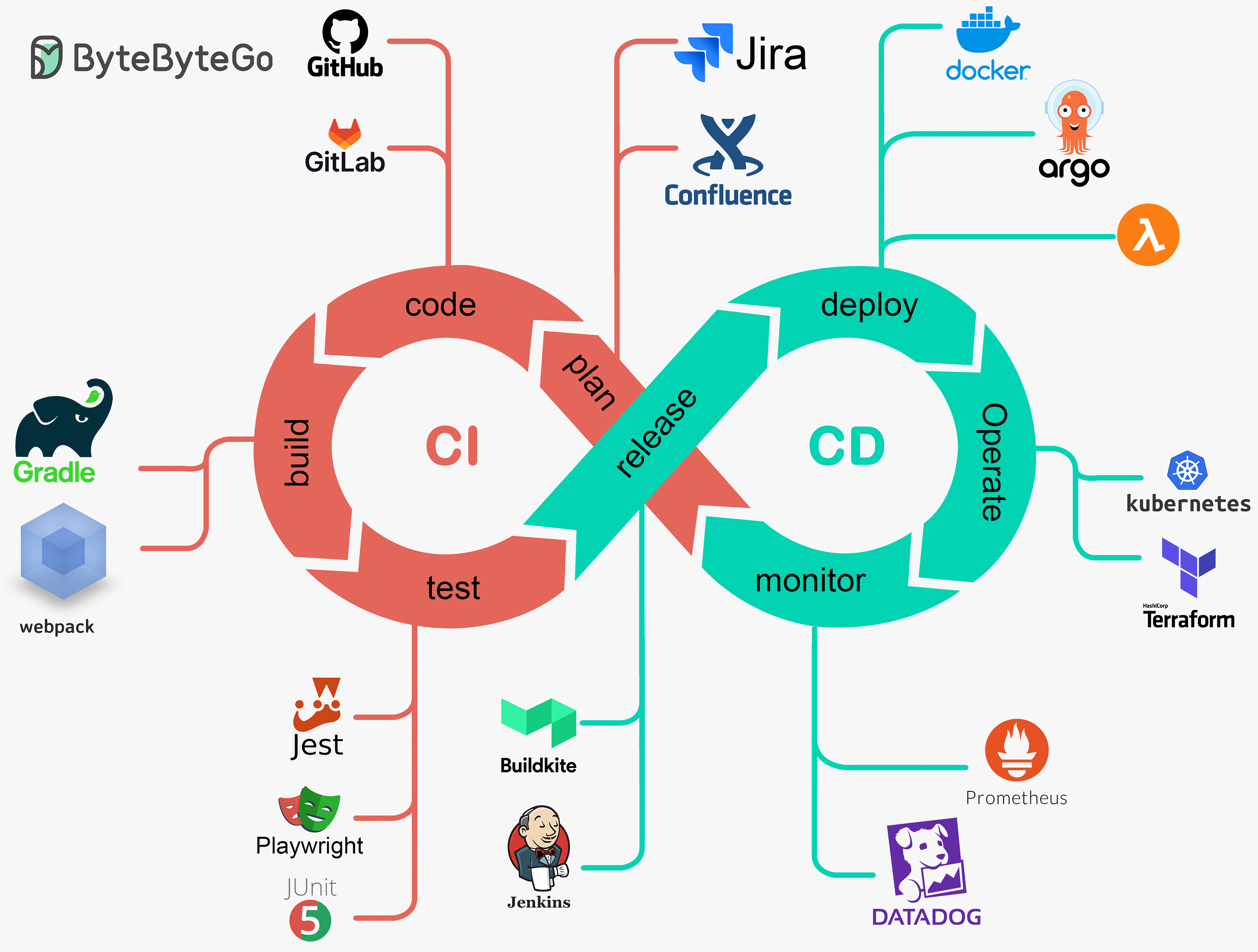


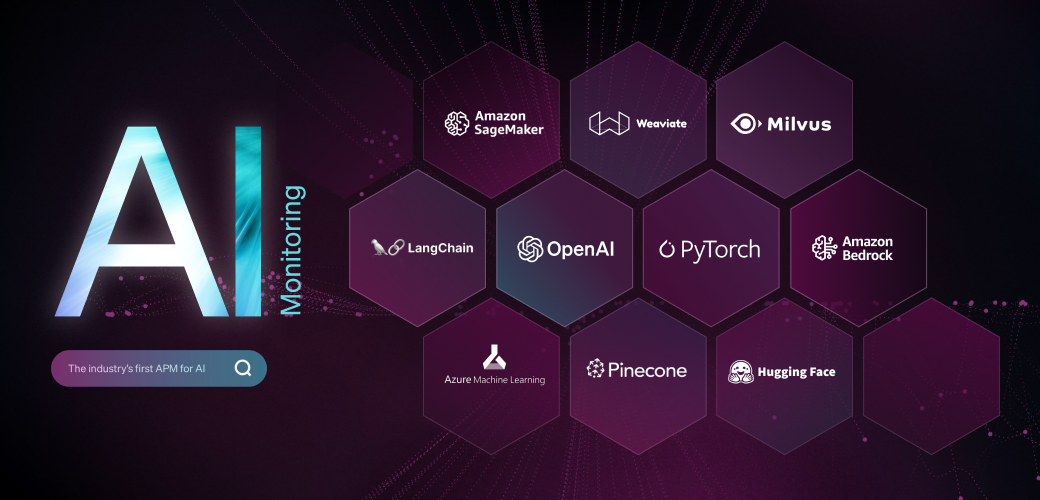
.jpg)
